BY KASEY NOSS | A large crowd gathered on June 22 outside 401, a new concept space in the heart of the Meatpacking District. It’s only a couple storefronts down from an Apple Store and right across the street from Gucci, Lululemon and Fjallraven, just to name a few. The crowd, however, wasn’t there for those.
Instead, people had come to celebrate a new exhibition honoring an era that defined the district long before high-end stores ever looked its way. As activist and producer Tim Hayes put it, “There were more lesbian bars within a four-block radius of where we’re standing 30 years ago than there are in all of New York right now.”
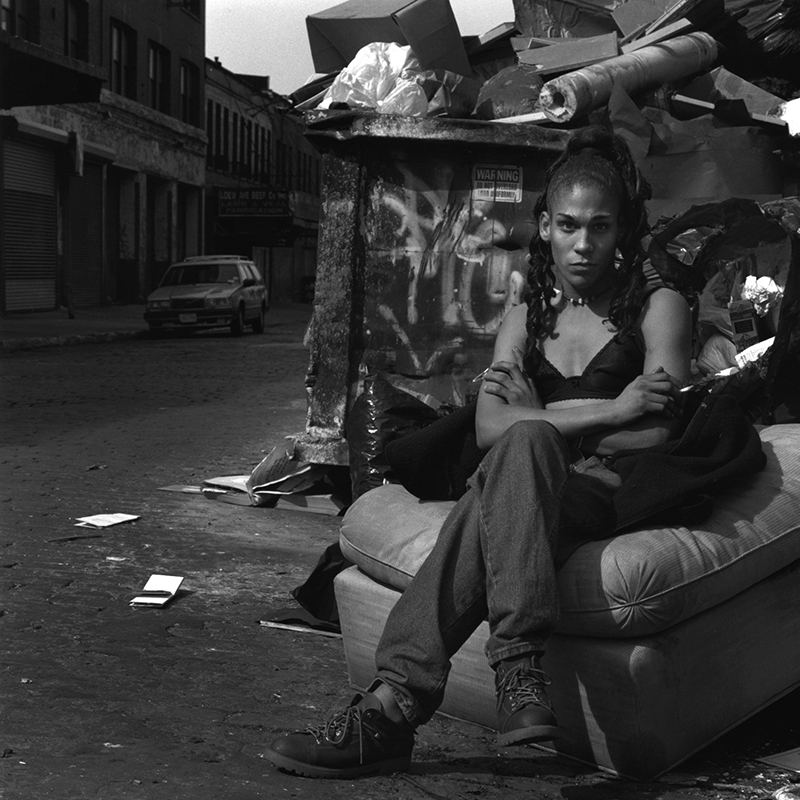
“A District Defined: Streets, Sex, and Survival” spotlights the Meatpacking District’s “rich history of queer nightlife” in the late 1980s and ’90s. The exhibition, which will run for three weeks through July 9, is a joint effort of the Meatpacking District business improvement district (BID), the American LGBTQ+ Museum and Hayes, who is based in New York City.
“Showcasing the district’s history is a privilege, and provides an educational opportunity for the neighborhood today,” said Jeffrey LeFrancois, the BID’s executive director, in a statement. “We’re happy with the result as this exhibition is an authentic showing of a community that belonged and still belongs here.”
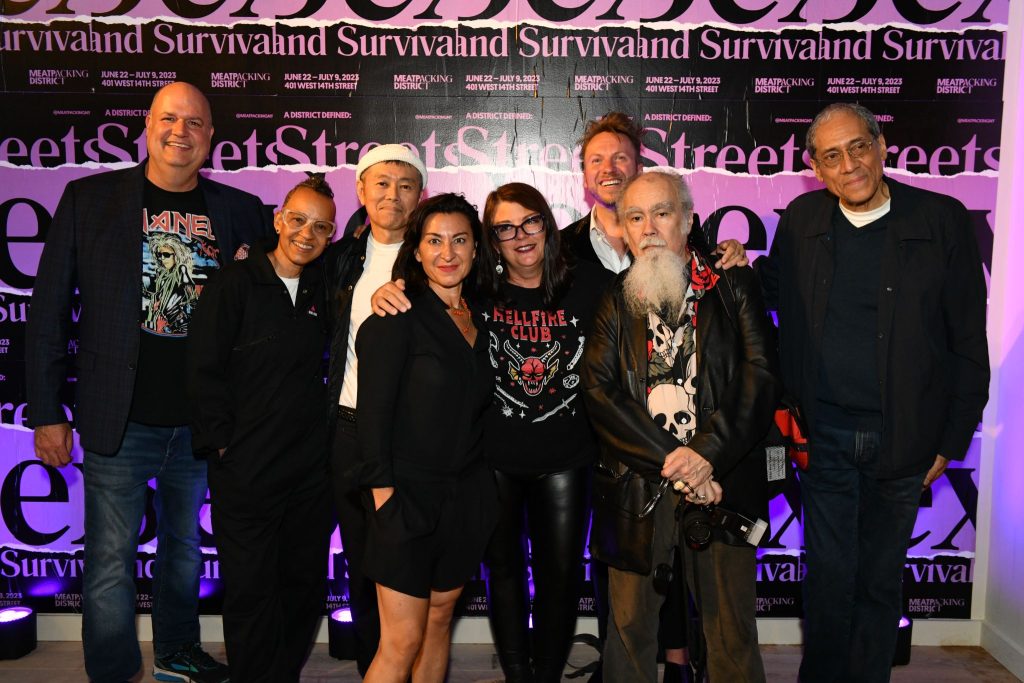
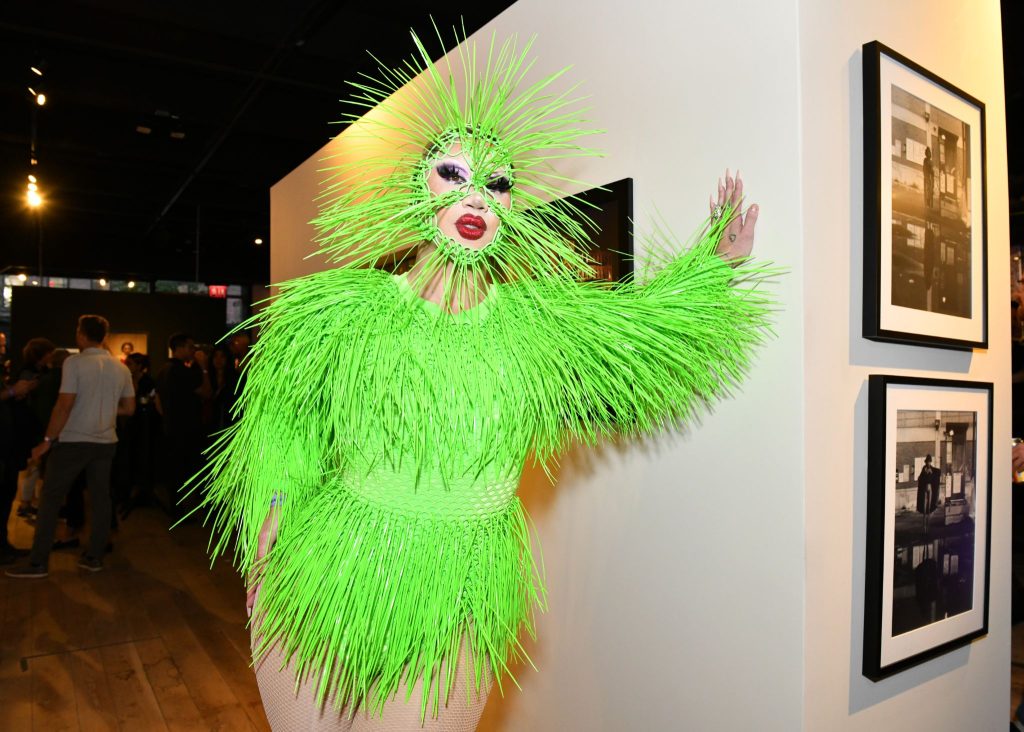
The exhibition showcases dozens of never-before-seen works from eight artists who captured the area’s electrifying essence in the last decades of the 20th century. Among them are Pulitzer Prize-winning photojournalist Lynsey Addario, who spent six months photographing trans women sex workers both on and off the job; and Brooklyn-born documentary photographer Joseph Rodriguez, a former taxi driver who photographed all types of passengers on the way home from The Anvil, The Vault and any other of the numerous gay bars and nightclubs that dotted the former meat lockers and warehouses of the former active meat market. (The show features a snapshot of Queen’s Freddie Mercury sporting a Mineshaft T-shirt.)
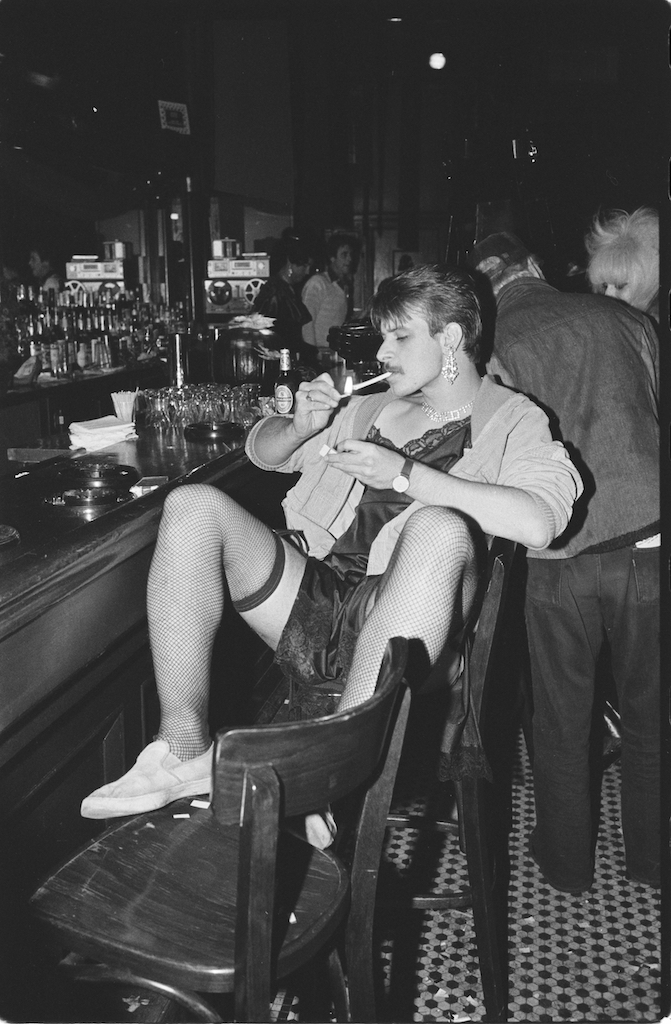
During this period, the Meatpacking District became a home for L.G.B.T.Q.+ individuals who “didn’t really have a place to stay except this area,” explained portrait photographer Katsu Naito, another artist featured in the exhibition.
“There were a lot of people who came to the Meatpacking District in the ’80s and ’90s who didn’t find community or feel safe anywhere else, and here’s where they found their friends and other people who felt like them, and played like them, and acted like them,” Hayes said. “That doesn’t exist anymore, and so we wanted to shine a light on it, and remember it, because otherwise people would just forget that it happened.”
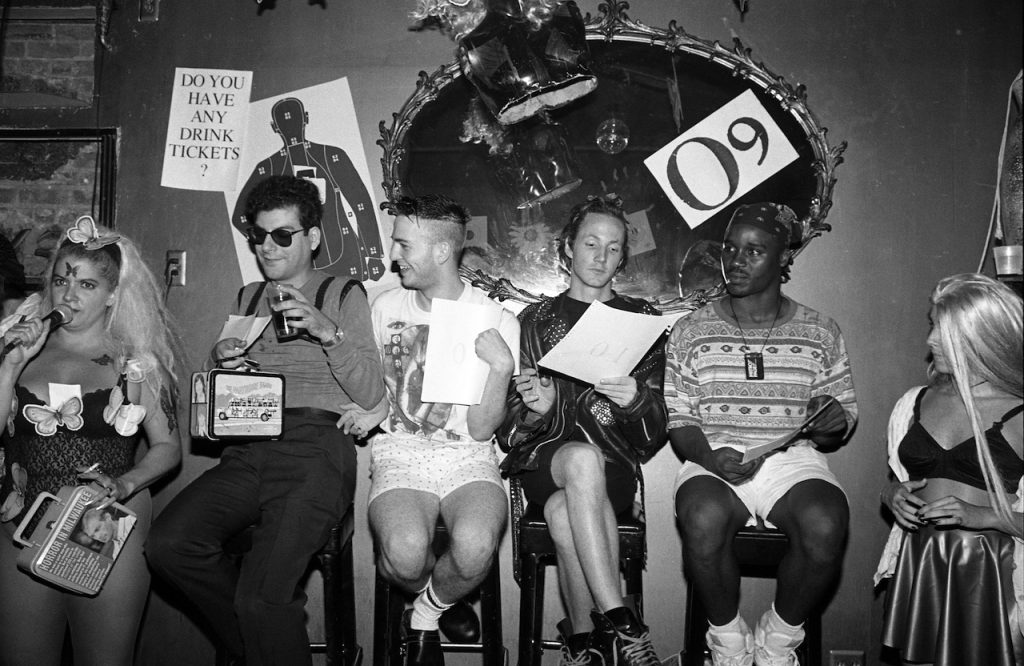
The exhibition comes at a time when homophobia and transphobia are on the rise in the United States, with 491 bills targeting L.G.B.T.Q.+ rights passed or proposed this year, according to the American Civil Liberties Union.
It’s a development that, for Hayes, makes the “survival” portion of the exhibition’s title particularly poignant.
“Survival was a very big part of it then, and I thought we were through that,” he said. “Now, survival has become something that a lot of this community needs to do again.”
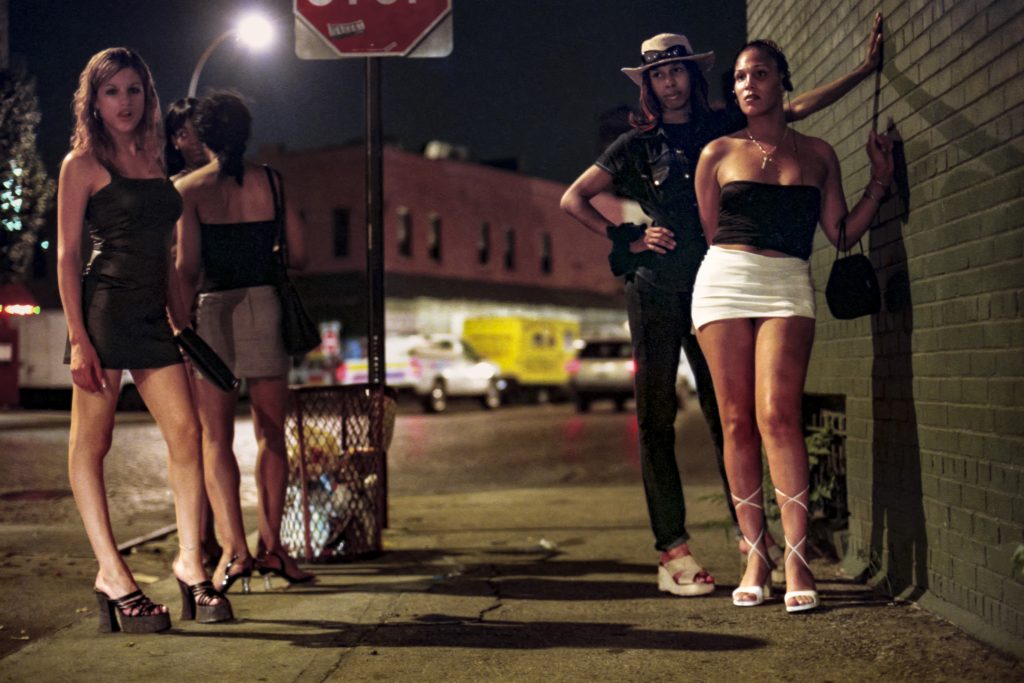
Naito hopes the display will make it easier for members of the trans community to be accepted by a society from which they have historically been marginalized.
“Hopefully, it’s going to be easier for them to live in the future,” he said.
That optimistic spirit was present at the festive opening, where the featured artists, patrons and subjects of some of the photographs themselves sipped specialty cocktails (sponsored by Supergay Spirits, of course) and mingled jovially while Rhianna’s “Diamonds” blared in the background.
“It’s just really an honor to be able to celebrate and highlight the people that literally walked the streets and created the foundation that we’re able to build on today,” said Tiffany Griffin, director of marketing, events and partnerships for the Meatpacking District BID.
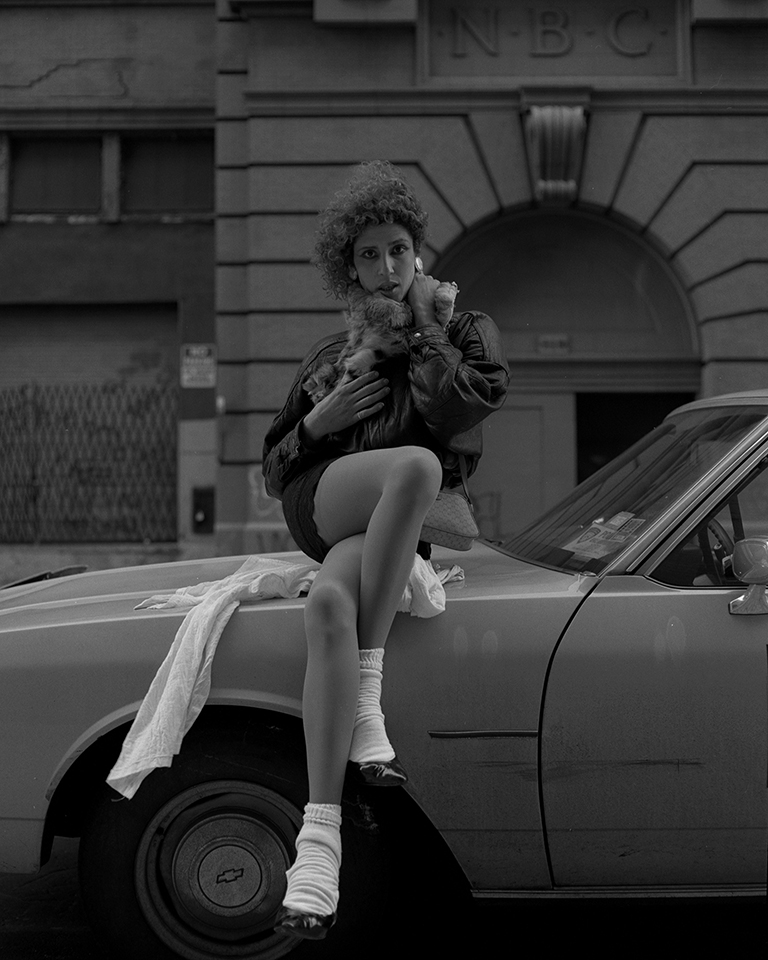
LeFrancois described the exhibition as a “textbook example of art as economic development.” To that end, the Meatpacking BID has teamed up with local DJs, entertainers and the district’s own Terremoto Coffee, which will operate a daily coffee bar in 401 so patrons can sip while they survey the gallery. In the evenings, 401 will offer drinks and happy-hour programming, including artist talks, panels and live music.
“We’re really excited to see what we learn from this and how we can continue to grow,” LeFrancois said.
“A District Defined: Streets, Sex, and Survival” is on view Sunday through Wednesday from noon to 9 p.m. and Thursday through Saturday from noon to 10 p.m., at 401, at 401 W. 14th St., at Ninth Avenue, through July 9. For a complete schedule of performances and programming, visit meatpacking-district.com/programming-at-401-2.

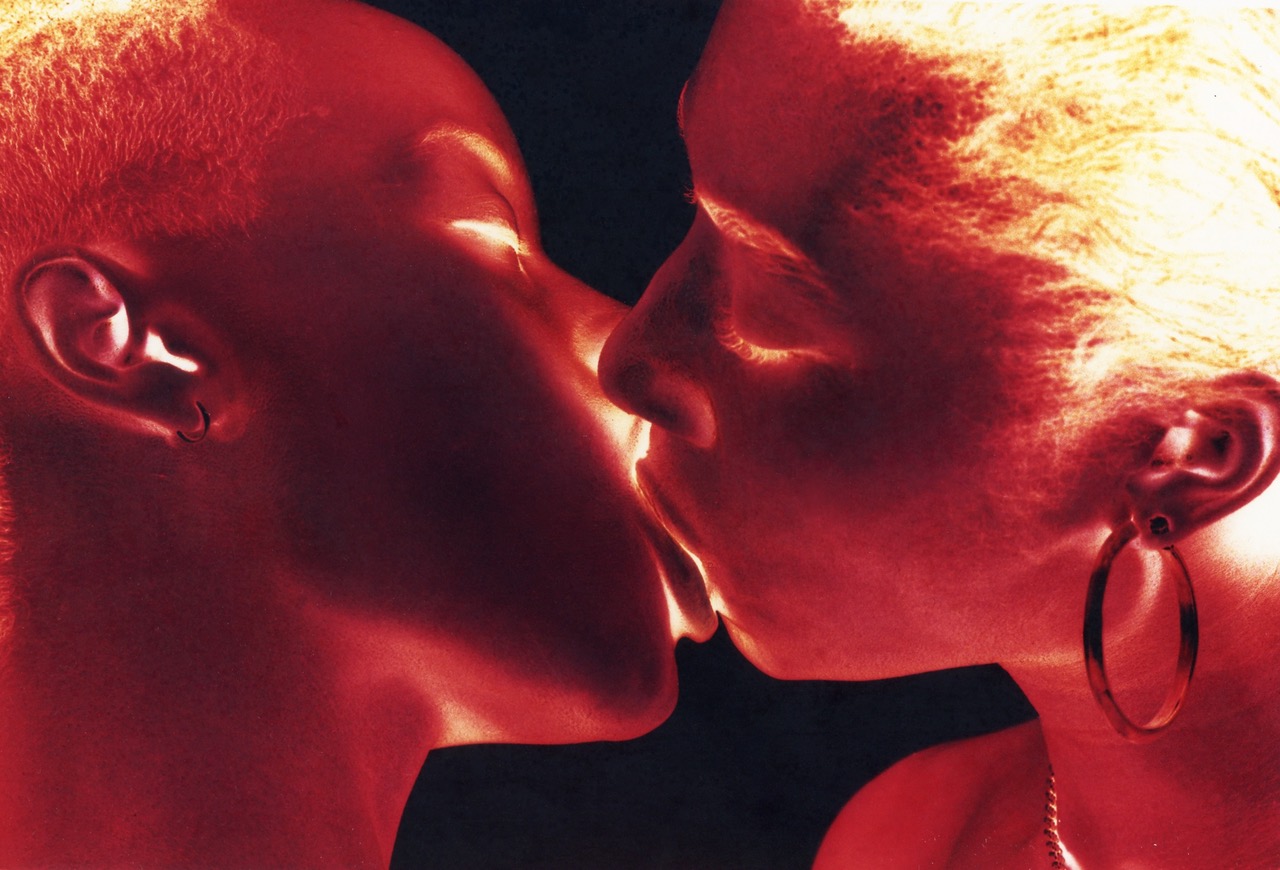
Wonderful exhibit! Thanks for this excellent article, Kasey!
I wish this exhibit had a permanent home. Maybe Tim Hayes, the Meatpacking BID, and the American LGBTQ+ Museum can partner with the new owners of the Liberty Inn to house a permanent exhibit in their new development, whatever it will be.
Formerly the Hide-a-Way Motel (which is pictured in the exhibit), this was the site of The Anvil until the mid-1980s.
Looks like the American LGBTQ+ Museum is virtual-only at this point, but planning a 4,000 s.f. gallery with the New-York Historical Society on Central Park West. So it would be great to have this history preserved right here in the neighborhood where it happened.
Although the Meat Market — as the Meat Packing District was called then — had an overwhelmingly gay scene from the late 70s (not late 80s) through the 90s, there was also a small heterosexual BDSM scene there as well.
The Hellfire Club opened a couple a nights a week for straight folk to play around. It operated from 1982-1986 in a basement space on that triangular block.